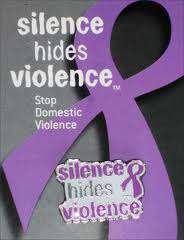Martin-Zimmerman Tragedy—Could It Have Been Prevented?

The author, executive director of the National Coalition Against Domestic Violence, explores how appropriate attention to everyday violent behavior can protect potential victims and save potential perpetrators as well.
As the country continues to discuss, explore, grieve and rant about the tragic death of Trayvon Martin, one important outcome should be that we fully review all the details of the events, both on that terrible evening and past incidents that may have lead to it.
What is clear is that a young man is dead, and another one is now faced with possible charges of manslaughter or murder. As investigations finally begin, any forensic evidence that is available and what the few witnesses can add will continue to flesh out the details of what transpired that night. Most tragically, one critical voice in this event is forever silenced, and for that reason we must use every tool at our disposable to examine the events.
Any information about George Zimmerman’s choice to use violence in the past is critical to our understanding of his act that night in February and of how we can reduce violence in our communities. The use of violence, particularly lethal violence, is seldom a random and isolated act. When the past of alleged perpetrators of this level of violence is exposed, other less deadly acts of violence usually begin to emerge. If we are to truly reduce violence in our communities, it is imperative that we respond to those early signs of violent acts, especially when those acts are directed at another person. The response must include significant consequences to hold the perpetrator accountable. If we do actually punish violence against persons with consequences that have meaning to the perpetrator, it may very well reduce the future use of violence by most of those criminals.
George Zimmerman has such a history of interpersonal violence. He also has a history of saying or implying he was the victim. None of the cases was exhaustively investigated, so we can’t know what actually happened at this point. In July of 2005 Zimmerman was arrested during a police effort to stop underage drinking at the University of Central Florida. He was charged with assaulting a law enforcement officer and resisting arrest with violence. Charges were reduced to resisting arrest without violence, and eventually dropped altogether. In that case he said the undercover officer assaulted him first. In August of 2005, his ex-fiancée filed for a temporary order of protection against him for violent acts she stated he perpetrated against her. He counter filed for an order of protection against her stating she assaulted him. The court granted both orders. The protection order against him was lifted in August 2006. Often a protection order is lifted if the party requesting it does not apply for a permanent order.
A former co-worker of Zimmerman’s recently stated to a reporter from the New York Daily News that Zimmerman was fired in 2005 from an off-the-books security job for “being too aggressive.” He stated that Zimmerman was just a cool guy but he could be like Jekyll and Hyde (this is very common language when a victim of domestic violence describes an abuser). The co-worker said Zimmerman overreacted to a woman being drunk at one of the parties he was working and threw her across the room. The former co-worker reports her ankle was twisted from the alleged assault by Zimmerman.
All of these choices by Zimmerman to use violence in previous situations when he wanted to be in control—if indeed those were his choices—offered us as a society the opportunity to make a statement to him and others that we don’t condone the use of violence to solve problems or stop someone else’s, in his judgment, unacceptable behavior. But we did not act. Charges were dropped, a counter protection order was issued, charges weren’t filed at all and he was fired, and—with the most recent case, when someone died—we are still waiting to see if he will be held accountable for the choice to use deadly force.
It is not uncommon for those who use violence, particularly in domestic violence cases, for neighbors, family, friends or co-workers to say the alleged perpetrator was a good guy, a loving father, that he helped others. All one has to do is read the most recent murder suicide to see another example of how the general public often misses signs of escalating violence. It is imperative that we begin to educate ourselves about those signs, even when they are exhibited in our own close circle of friends and family, and respond to that violence in a way that will reduce the likelihood of its reoccurrence and escalation. We must stop excusing the behavior, and we must use the tools we have in the criminal justice system to hold perpetrators accountable when they choose to use violence against another living being.
More articles by Category: Race/Ethnicity, Violence against women
More articles by Tag: Domestic violence



























